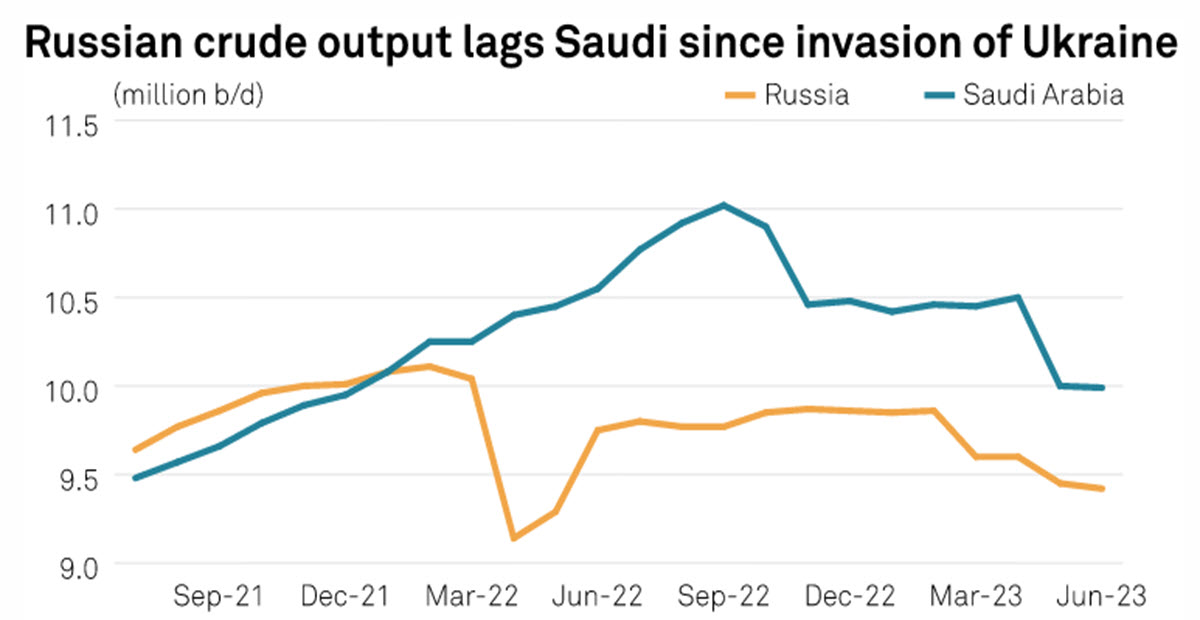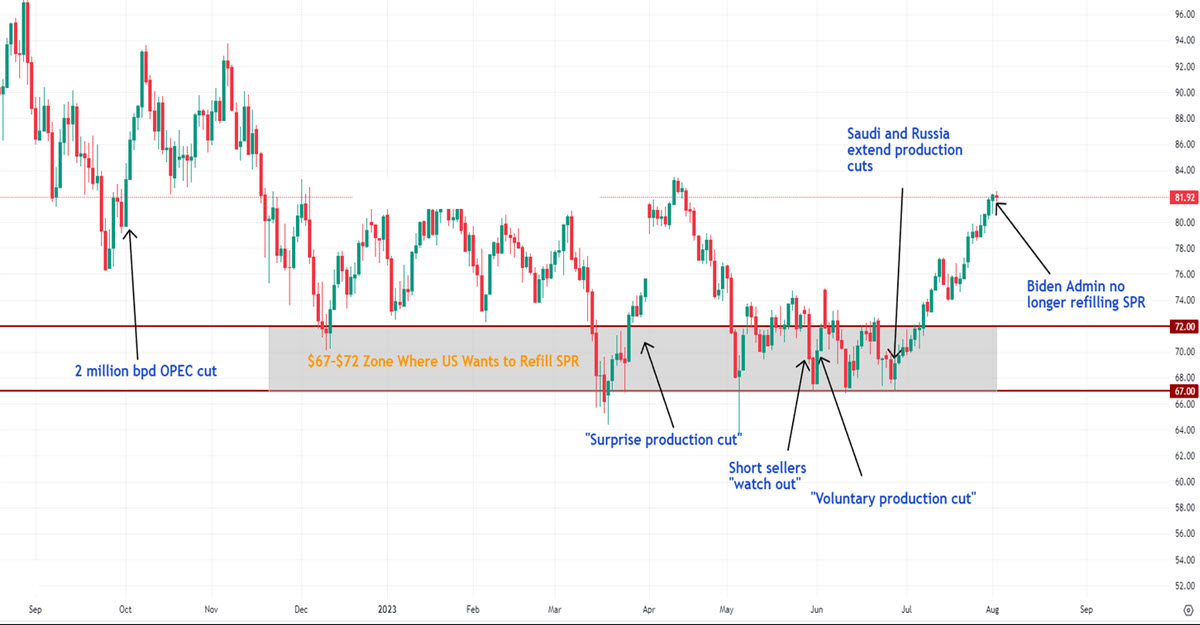In July, OPEC’s crude production tumbled by the most in three years (-900k) to an average of 27.79 million bpd as Saudi Arabia implemented a deeper cutback in a bid to shore up global markets and get more revenue to support expanding government spending. Saudi Arabia pumped an average of 9.15 million barrels a day in July; supplies also fell in Nigeria, by 130,000 barrels a day to 1.26 million daily and in Libya to 1.1 million a day, following a protest that halted its biggest Oil Field, Sharara. Russia pumped 9.42 million bpd of crude in June, compared with 10.11 million bpd in February 2022 as a balance between its overall output and higher oil prices favoring the financing of its war in Ukraine.
The Joint Ministerial Monitoring Committee (JMMC), an OPEC+ ministerial panel, met last Friday in Wien and confirmed its pledge to strictly monitor the market conditions: Saudi Arabia’s 1 million bpd cut has been confirmed to be extended for another month to include September, with a chance of being further extended and even deepened; Russia will taper to 300k bpd.
All this, despite the fact that world Oil demand is officially expected to rise in H2 by 2.2 million bpd to reach 102.1 mbpd, an all-time record.
There’s another interesting aspect to this: the Biden Administration has had massive withdrawals from the Strategic Petroleum Reserve (SPR) with the aim of fighting inflation. Higher oil prices have been a major contributor to inflation which the Fed and US government have been fighting for 2 years now. Data shows that more extractions are still happening. Over 221 million barrels were withdrawn from the reserve in 2022 alone in response to inflation and geopolitical conflicts. The SPR now holds 346 million barrels of crude oil, its lowest level since 1983. In October 2022, the Biden administration announced its intent to refill the SPR. A statement said they plan to make purchases when oil prices are “at or below $67 to $72 per barrel.” Every single time oil prices have hit that level this year, OPEC took action. On June 9th, the US refilled 6 million barrels of the SPR, still well below the 250 million+ that have been drained. At the time, oil prices were right around $70 which is in the price zone that the US wants to refill the SPR. Promptly thereafter, Saudi Arabia and Russia extended recent crude oil production cuts. This is the 6th time that OPEC has taken action when oil prices hit the $67 to $72 zone this year. Now, the US can no longer fill the reserve again.
Technical Analysis
USOil has advanced steadily since 28 June and is currently up 23.11% ($82.62) from that day’s low of $67.03. It is back to trading in the wide range of Nov 2022 – Mar 2023 between about $83.50 and $73.25. It could make sense for it to consolidate in this price zone. The spread against UKOil has hit a low this year, in the $3.40 area, indicating a preference for Northern Sea Seaborne Oil.
US Oil, UK Oil spread
Should consolidation not occur and a further extension of the rally happen, we do not consider it impossible to see the $93 area in early autumn. Technical indicators are high, positive but not overbought.
US Oil, Daily
Click here to access our Economic Calendar
Marco Turatti
Market Analyst
Disclaimer: This material is provided as a general marketing communication for information purposes only and does not constitute an independent investment research. Nothing in this communication contains, or should be considered as containing, an investment advice or an investment recommendation or a solicitation for the purpose of buying or selling of any financial instrument. All information provided is gathered from reputable sources and any information containing an indication of past performance is not a guarantee or reliable indicator of future performance. Users acknowledge that any investment in Leveraged Products is characterized by a certain degree of uncertainty and that any investment of this nature involves a high level of risk for which the users are solely responsible and liable. We assume no liability for any loss arising from any investment made based on the information provided in this communication. This communication must not be reproduced or further distributed without our prior written permission.




















